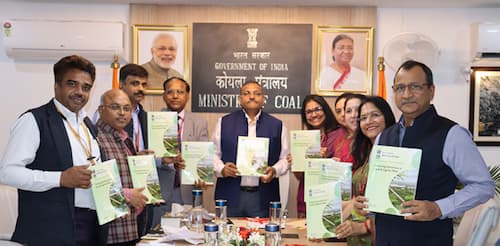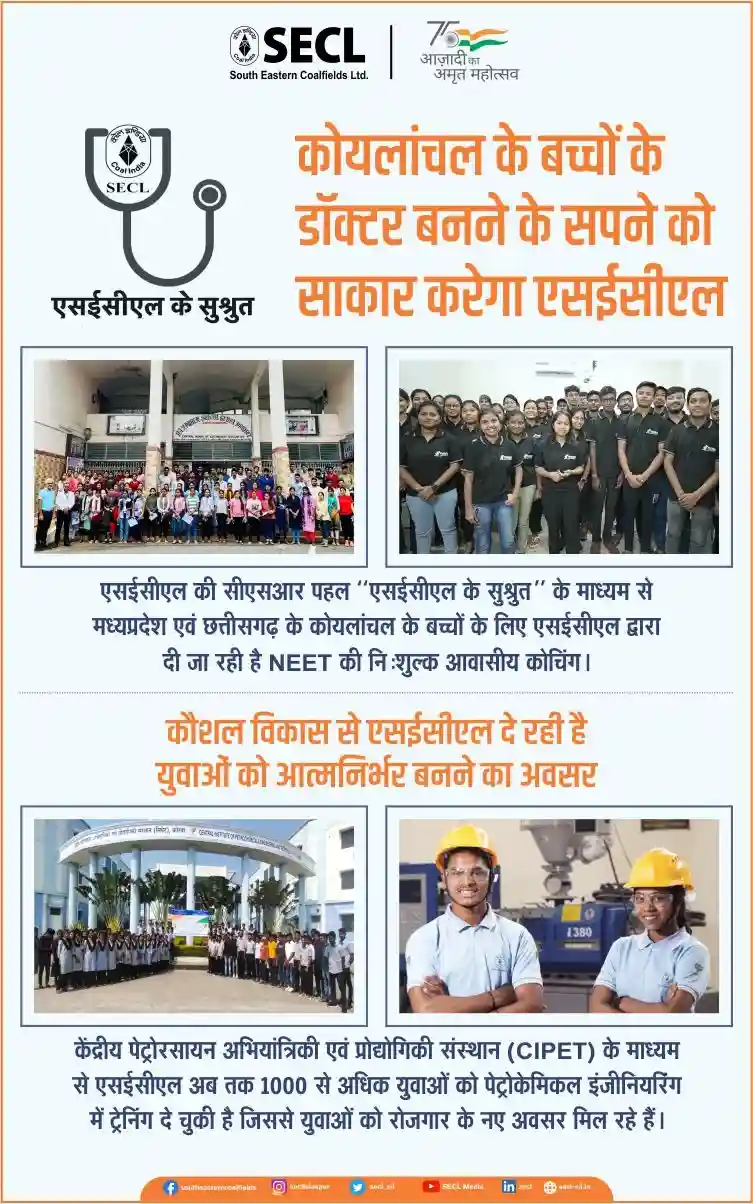Coal and Lignite Public Sector Undertakings (PSUs), under the guidance of the Ministry of Coal, have not only increased coal production levels over the years to meet the escalating energy demands of the nation but have also demonstrated their dedication to environmental preservation by implementing various mitigation measures. One such measure involves reclaiming mined-out areas through extensive plantation efforts in and around coal-bearing regions.
As the year marks the 30th anniversary of the UN Convention to Combat Desertification (UNCCD), focus of World Environment Day, 2024 is on land restoration, desertification and drought resilience, under the slogan “Our Land. Our Future. We are #GenerationRestoration”. The theme emphasizes the importance of sustainable land management and the need to rehabilitate degraded lands to ensure a sustainable future for all. Coal Ministry has released a report titled “Greening Initiative in Coal & Lignite PSUs”, which highlights the efforts of the PSUs in the coal and lignite sectors to restore and rejuvenate mined-out lands.
These PSUs have undertaken extensive afforestation and ecological restoration projects, transforming barren landscapes into thriving green areas. Such initiatives not only combat desertification and enhance drought resilience but also contribute to carbon sequestration and biodiversity conservation. By integrating these greening efforts, the report underscores the significant role that coal sector can play in advancing the goals of land restoration and promoting environmental sustainability. This synergy between global ambitions and local actions illustrates a comprehensive approach to preserving our planet’s land resources for future generations.
Secretary, Ministry of Coal, Shri Amrit Lal Meena commended the endeavours undertaken by CMPDI and the Sustainability & Just Transition Division of the Ministry of Coal in compiling this report. He also expressed his anticipation that the report would garner significant attention and be leveraged to augment green cover through the adoption of innovative techniques, such as seed ball plantation, seed casting via drones and Miyawaki plantation, within coal mines by other entities. It aims to outline the initiatives undertaken by the coal sector to increase green cover in coal regions through reclamation efforts.
This report emphasizes the consistent and earnest endeavours made by Coal/Lignite PSUs to mitigate the environmental impact of coal mining through ongoing reclamation and afforestation endeavours. The report presents greening initiatives carried out in both closed and active coal mines, alongside a blueprint for a more sustainable and eco-friendly future. The data provided has undergone validation through Remote Sensing Studies and on-site ground-truthing surveys at selected locations. This report stands as the initial comprehensive documentation of baseline data regarding greening efforts by Coal/Lignite PSUs, setting a standard for forthcoming scientific investigations. Contained within the report is a compilation of mine-specific data by the companies concerning land usage status, corresponding reclamation efforts and both current and planned plantations, both within and outside project sites. The amalgamated data is presented to depict land usage across coal mines, the extent of completed reclamation projects, and the varieties of plantations undertaken. Additionally, a roadmap has been outlined for future plantation initiatives planned until the fiscal year 2029-2030, taking into consideration the necessary advancements in effective land reclamation and the sustainable utilization of mining-degraded lands.
Coal/Lignite PSUs are implementing scientific reclamation techniques for mined-out lands according to technical and biological schedules outlined in mining plans. Additionally, they are pioneering community-oriented land uses such as restored forests, eco-parks, eco-tourism sites, etc. According to the report, Coal/Lignite PSUs have established green cover spanning approximately 50,000 Ha in and around coal mining regions over the years. This includes biological reclamation of de-coaled land covering around 29,592 Ha, additional plantation efforts like avenue plantation within mine leaseholds accounting for roughly 12,673 Ha and plantation activities outside mine leaseholds covering about 7,735 Ha. This collective effort is estimated to create a carbon sink potential of approximately 2.5 million tonnes of CO2 equivalent per year.
It is anticipated that this report will reinforce the commitment to land reclamation and management among coal PSUs, while also catalysing the establishment of sustainable green cover across coal mining projects. This initiative will further contribute to the augmentation of India’s green cover, thereby aiding in the fulfilment of India’s Nationally Determined Contribution (NDC) target of achieving a carbon sink of 2.5 to 3.0 billion tonnes by the year 2030. The report is available on the website of the Ministry of Coal
















